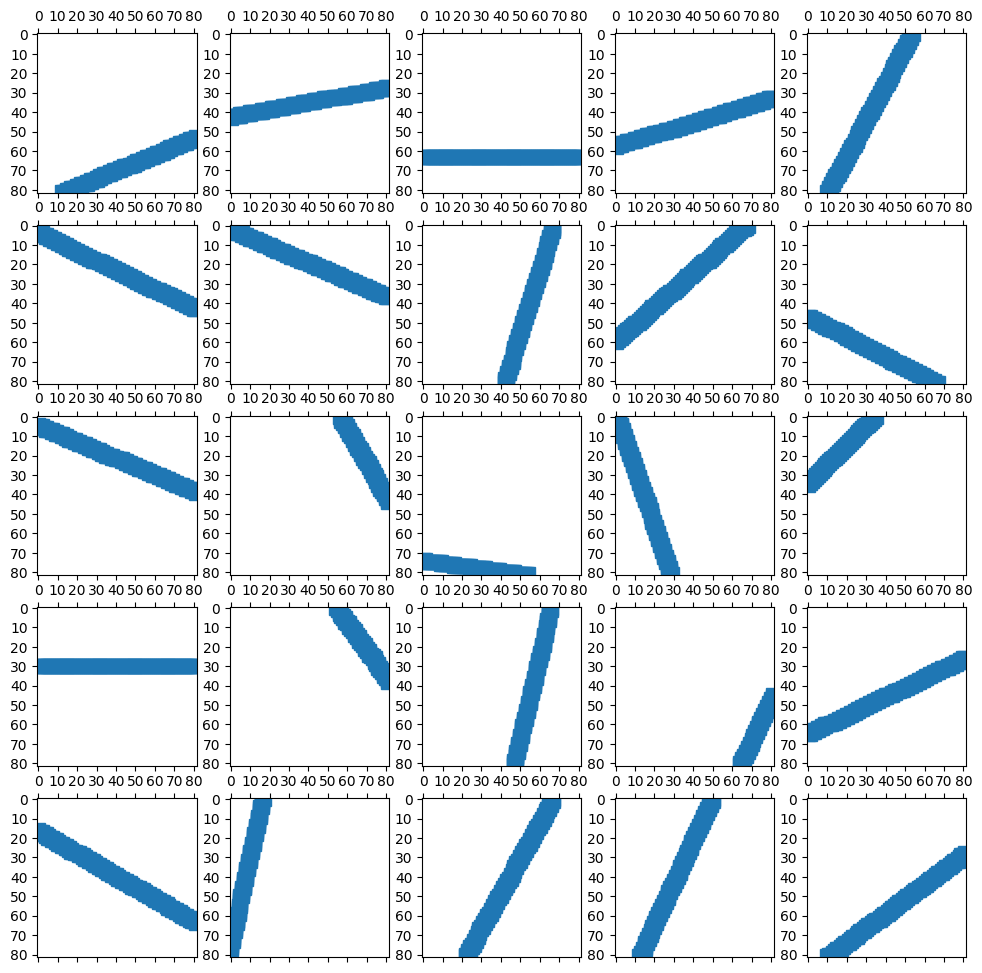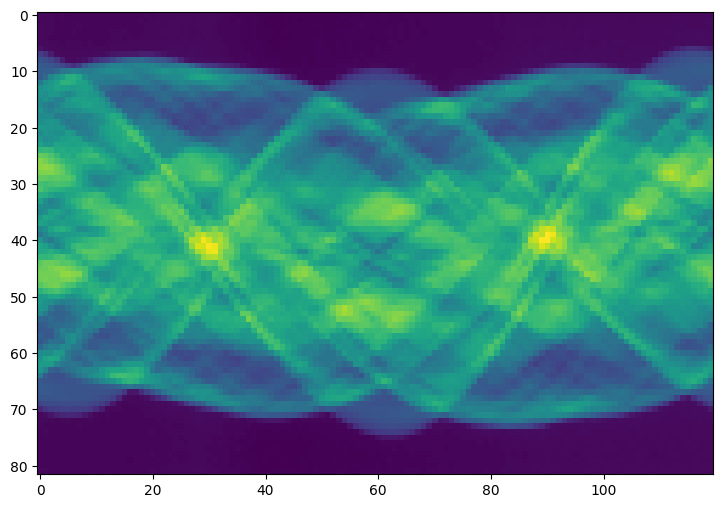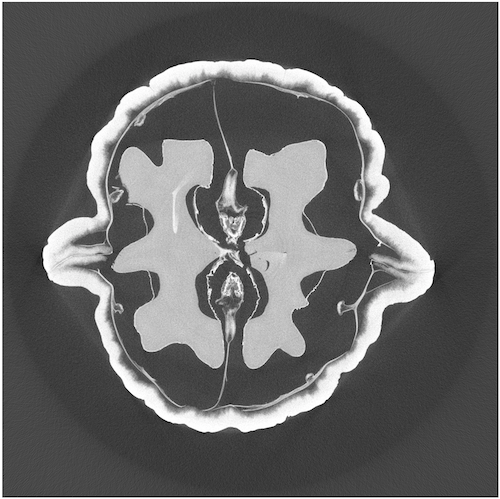Computed Tomography#
import numpy as np
import scipy.sparse.linalg as sla
import matplotlib.pyplot as plt
from scipy.io import loadmat
The following example is tomographic X-ray data of a walnut. The dataset was prepared by the Finnish Inverse Problems Society.
data = loadmat('./data/ct.mat')
The data file contains a measurement matrix \(A\) and the projections vector \(m\). These are large matrices and so we need sparse matrices.
Measurement Matrix \(A\)#
Each row of the measurement matrix represents a projection of an X-ray through the sample as a particular angle. The measurement matrix is huge! And so we need to use sparse matrices to save memory.
A = data['A']
A.data.nbytes
7762752
A.shape
(9840, 6724)
type(A)
scipy.sparse.csc.csc_matrix
We can visualize each row by reshaping into a matrix. Let’s look at the x-ray projection matrix corresponding to random rows of \(A\).
plt.figure(figsize=(12,12))
N = 5
for i in range(0,N**2):
plt.subplot(N,N,i+1)
index = np.random.randint(0,A.shape[0])
proj = A[index,:].reshape(82,82)
plt.spy(proj)
plt.show()

Sinogram: Measured Projections#
The vector \(m\) is the collection of 82 projection measurements from 120 different angles.
sinogram = data['m']
sinogram.nbytes
78720
sinogram.shape
(82, 120)
type(sinogram)
numpy.ndarray
plt.figure(figsize=(10,6))
plt.imshow(sinogram)
plt.show()

Compute Truncated SVD Solution#
We need to solve \(A\mathbf{x} = \mathbf{b}\) (where \(\mathbf{b}\) is the vector of projections) however there are errors in the projections vector \(\mathbf{b}\) and so we actually have
where \(\mathbf{e}\) is noise. We need to compute the truncated pseudoinverse to avoid inverting the noise
b_e = sinogram.reshape([82*120,1],order='F')
Truncate the measurement matrix after the largest \(k\) singular values and compute the pseudoinverse.
k = 200
P,S,QT = sla.svds(A,k=k)
P.shape
(9840, 200)
QT.shape
(200, 6724)
Compute the rank \(k\) truncated pseudoinverse \(A_k^+\) and \(\hat{\mathbf{x}} = A_k^+ ( \mathbf{b} + \mathbf{e} )\)
A_k_plus = QT.T @ np.diag(1/S) @ P.T
X = A_k_plus @ b_e
Visualize the result by reshaping \(\hat{\mathbf{x}}\) in a square matrix.
plt.figure(figsize=(8,8))
plt.imshow(X.reshape(82,82).T,cmap='bone')
plt.show()

True Solution#
Compare to the true solution provided by FIPS.


